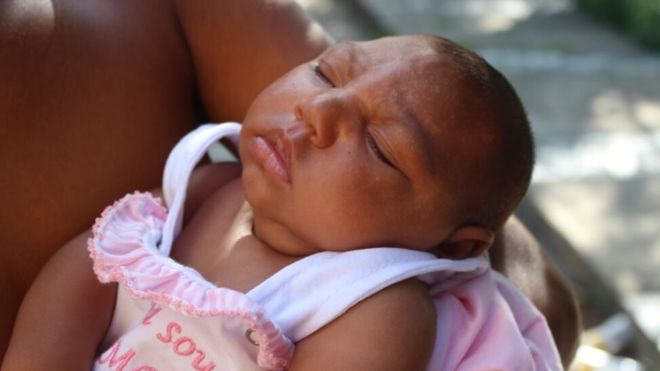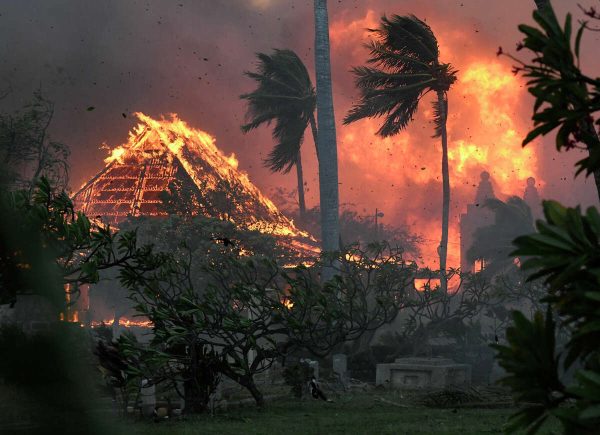To ban or not to ban….
We never really think about it. The roles and effects diseases can have in our lives. Sometimes we never really hear about it until it becomes relevant. Well, when it comes to the Zika Virus, it’s just that.
The massive insurgence of the Zika Virus during the summer of 2015 in Brazil hit the nail on the head. During the summer of 2015, a large spike in the amount of people getting infected by the Zika Virus occurred. The number of people getting infected raised from the approximate 400 to 500 people a year to approximately 3300 persons getting infected with the virus.
Yet, it is important to fully understand what Zika is and how it is spread in order to combat the Virus.
According to the Centers for Disease Control (CDC), The Zika Virus is a virus transmitted from the Aedes mosquito. In which these mosquitoes are active during the day as well as the night. The Zika Virus can be spread through pregnancy, in which the pregnant mother passes it down to her fetus. Infection during pregnancy can cause the child to have certain birth defects. The Virus can also be sexually transmitted. Also the Virus can be spread through blood transfusion if it were to happen (this is very likely but not confirmed by the CDC). Currently the best way to prevent further spread of the Virus is by using insect/mosquito repellant.
It is also important to understand the effects and the symptoms the Virus can have on the human body. Yet, the effects of the Virus vary between persons, primarily between men, women and children.
People infected by the Zika Virus tend to experience mild symptoms such as a mild fever, skin rash (exanthema), and conjunctivitis. Other symptoms include joint pain, muscle pain and headache. The primary difference in symptoms varies from the pregnant mother to the fetus. A fetus infected with the Zika Virus can have serious birth defects which include Microcephaly as well as Guillain-Barre Syndrome (GBS).
As mentioned, a fetus infected with the Zika Virus has the possibility of receiving these birth defects. Microcephaly is an uncommon condition where the circumference of the baby’s head is less than presumed. The condition is the likely result of halting the brain’s development in the womb and can be caused by genetic or environmental factors. These factors include: toxins, radiation or infection. Microcephaly can also be present as an isolated condition or may be associated with other symptoms such as convulsions, development delays and feeding difficulties.
Guillain-Barre Syndrome (GBS) is an acute illness of the nerves that produces a lower, bilateral and symmetrical sensorimotor development deficit. It is estimated that between 0.4 and 4.0 cases per 100,000 get GBS every year. In North America and Europe, it is more common in adults and increases with age. Studies of the syndrome show that men tend to be more affected by it than women do.
It is important to note that people who had the Zika Virus go through post infection symptoms according to Diane Boaventura, a citizen of Brazil who had the Zika Virus, saying,”After I had Zika, I would lose hair, I would have bruised skin, my skin would peel, I would also vomit, my nails and bones got weak.”
Diane Boaventura also shared her experience with Zika saying, “Zika changed how I lived daily. I avoided heavily crowded rural areas, I also had mosquito repellant on me. I try to always have clean water and to not let the water sit idle. Simply put, Zika was able to influence my daily routine.”
Now that the symptoms of the Zika Virus are currently known. Is there a vaccine or specific treatment for this virus? As of the moment, there is no current vaccine or treatment for this virus. The best way to prevent infection from the virus is protection against mosquito bites.
But why has the Zika Virus become such a problem? With the significant birth defects that come with the virus, alongside the significant number of people getting infected with virus, the virus has also spread rapidly throughout the world in parts of the world with tropical/warm climates. The Zika Virus has been know to circulate through Africa, the Americas, Asia and the Pacific region. The Zika Virus has only been known to cause sporadic infections to humans until 2007, when an outbreak in Micronesia infected 31 people, according to The World Health Organization’s Zika Virus Situation Report of February 5, 2016.
From 2007 to 5 February 2016, Zika had managed to reach 44 countries and territories. This includes 33 countries with active Zika transmission, six countries with indirect evidence of Zika, and five countries with a Zika history but no active transmission, according to the W.H.O. situation report. By 2015 in the state of Bahia, Brazil more than 56,318 cases of Zika Virus infection had been made. Due to the magnitude of the epidemic, Brazilian ceased counting the cases of Zika, but the estimated number of cases of infected is between 497, 593 to 1,482,701 since the start of the outbreak.
Second to Brazil, Colombia is the second most infected with 20,297 cases of infected up to January 23 of 2016.
According To the Zika Situation Report from the World Health Organization (WHO), by February 1, 2016 the Zika Virus had been deemed a Public Health Emergency of International Concern. But as of November 18, 2016 the World Health Organization had no longer deemed the spread of the Zika Virus as a Public Health Emergency. Causing many to raise questions as to why.
Despite the World Health Organization no longer deeming that the Zika Virus is a public health issue, according to an interview conducted by The New York Times with Dr. Peter Salama, executive director of the W.H.O.’s health emergencies program said, “We are not downgrading the importance of Zika,”. Thus, it demonstrates that organizations such as W.H.O. and even the CDC will continue to find a solution to the Zika Virus epidemic.
But when it comes to Zika, it is important to recognize the effects that traveling has caused on how Zika had spread throughout the world. Would a travel ban drastically improve the further prevention of the Zika Virus? Or could a travel ban for countries with active Zika Virus transmission be completely unnecessary?
According to Ildebrando Delandio Mendes Cardoso, a citizen of Brazil, as well as a renowned lawyer spoke, “A travel ban of the Zika Virus would not improve the conditions of the Zika Virus. You can not take away the right of the people to travel. Once you take away the rights of the people, it becomes a direct violation of such.” Mr. Cardoso also said, “Prevention is the best possible solution.” meaning that preventing and taking precautions to prevent getting infected is the best solution to dissolving the epidemic.
Mr. Cardoso, had also shared that the Zika Virus has also played a role in changing his daily routine and lifestyle. Mr. Cardoso said, “Zika changed my routine and how I live. I tried to be careful not to let water sit idle for too long. I don’t have plants anymore in my home. I try to stay away from some rural areas where Zika was very common. I always try to keep clean water in the house. I always have mosquito repellant on me. Simple things like that help to prevent Zika from spreading.”
The Zika Virus has undoubtedly spread to many parts of the world. The Zika Virus has even reached The United States of America. With initial cases being in southern Florida and then most recent cases in the state of Texas. In concerns to residents of southern Florida, Governor Rick Scott announced on December 09, 2016 that southern Florida no longer has an active Zika Virus transmission. The number of cases of Zika in southern Florida have also dropped sharply, as a result of the state’s approach to actively control the mosquitos in the area.
But while the situation may be controlled in Florida, the most recent case of Zika in the USA comes from the state of Texas, where a woman who is not pregnant, allegedly got infected with Zika. State officials have been working with the CDC to understand and access the issue at hand.
Overall the continental United States, there have been confirmed 4,444 cases of Zika, in which 1,114 were in pregnant women. Does this mean that a travel ban or simply a travel alert to the areas that have reported Zika transmission be necessary?
Well according to Mrs. Panzella, a registered nurse at Naugatuck High School, “I think to ban would be a difficult thing, I don’t think that would happen in the near future. Even with Ebola, it was very difficult, and that was a more serious condition, with the high mortality. So I think a ban would be very difficult to impose, I don’t think that would happen unless it became a very widespread issue that caused a lot of harm and immediate death. So I think it would not be a necessary step to take to prevent further spread.”
But the Zika Virus to continues to spread through the world. More people get infected. In Brazil, during the month of October 2015, there was an unusual increase of cases of microcephaly in the state of Pernambuco in northern Brazil. As of January 30 2016, Brazilian authorities have stated that there has been reported 4,783 cases of microcephaly including 76 deaths nationwide. The deaths were of congenital malformations, Zika was identified in the fetal tissue of 5 cases all from the northwest of Brazil.
In context of the Zika Virus outbreak, Brazil, Colombia, El Salvador, Suriname, and Venezuela have reported an increase of Guillain-Barre Syndrome (GBS).
As the Zika Virus continues to gain notoriety in the world, many organizations continue to work to resolve the Zika Virus epidemic. It has been advised to take safety and health precautions if an insistence to travel to a country with active transmission is needed.
Pregnant women who feel that they may have been exposed to the Zika Virus may wish to consult their health-care providers for close monitoring of their pregnancies.
Not even W.H.O. believes it is necessary for a travel ban. Stating that the W.H.O. committee found no justification to restrict travel or trade. However they also stated in the W.H.O. Zika Situation Report of February 5, 2016 that, “travelers to areas where the Zika virus cases have been found are urged to protect themselves from mosquito bites. Pregnant woman considering travel to affected areas may wish to consult their healthcare provider prior to travel and after return. They should also practice personal and household step to prevent mosquito bites.”
When it comes to Zika, there are still many mysteries. But one thing for sure, many have expressed the imposing a travel ban in countries that have active Zika Virus transmission would not be necessary and should not be implemented. Many organizations are still learning about the Zika Virus but patience and time will tell what our next step to defeating the epidemic will be. Until then, take the necessary precautions to keep yourself safe and to keep a wary eye for potential signs of Zika. Taking the necessary steps to keep yourself safe is the best solution to solving and defeating an epidemic.

I am a senior at NHS. I want to be a microbiologist or a biomedical engineer. I am taking this class because I enjoy writing and researching real time...













